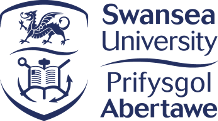Circularity in the Clean Energy Transition – IEA EGRD Webinar
26 April 2021
This webinar will look at the circularity of the clean energy transition from different angles: Challenges related to sourcing materials for renewable energy infrastructure, circularity in manufacturing processes and their durability and eventually disposal or reuse. These challenges will be exemplified by a closer look at wind turbines and batteries.
Content Description
The circular economy has gained increasing prominence as a tool which presents solutions to global sustainable development challenges. By addressing root causes of waste and pollution, the circular economy aims at keeping products and materials in use, and regenerating natural systems. It is defined as a regenerative system in which resource input and waste, emission, and energy leakage are minimised by slowing, closing, and narrowing material and energy loops. This can be achieved through long-lasting design, maintenance, repair, reuse, remanufacturing, refurbishing, and recycling.
Renewable energy technologies such as wind turbines, solar panels and batteries are all key to combat climate change and contribute to the low-carbon energy future. However, they also rely on the production and use of composite and critical materials that have negative impacts on the environment and society during extraction and manufacturing. From a whole system perspective, it is important to optimise resource use of components and materials of renewable energy technologies. They should be designed for durability, reuse and remanufacturing, rather than committing them to sub-optimal waste management and energy recovery pathways.
This webinar will look at the circularity of the clean energy transition from different angles: Challenges related to sourcing materials for renewable energy infrastructure, circularity in manufacturing processes and their durability and eventually disposal or reuse. These challenges will be exemplified by a closer look at wind turbines and batteries. Each session will start with presentations from three leading experts followed by a Q&A session.
Expected outcomes
The webinar will result in a summary report identifying the challenges and opportunities of addressing the circular economy and will present perspectives for R&D planners and strategists. In addition, an executive summary will be presented to the IEA’s Committee on Energy Research and Technology (CERT).
Program
13:00 Introduction – Opening and scene-setting remarks
- Welcome by
Karl Kienzl, Federal Ministry for Climate Action, Austria
Klaus Skytte, CEO, Nordic Energy Research
Birte Holst Jørgensen, Chair EGRD
13:10 Session I: Introduction to circularity and energy
Moderator: Herbert Greisberger, CEO, Lower Austrian Energy and Environment Agency
This session focuses on lessons learned from policies designed to promote sustainable sourcing of raw materials, decommissioning and reuse of materials and energy-related infrastructure.
- Circular Economy – why it is a must in a clean energy transition
Harald Friedl, Global Circular Economy Ambassador; COP 26 – Circular Economy Lead - Circular economy challenges and opportunities in the energy transition
Dr. Anne Velenturf, University of Leeds, UK - CircIT – systems to promote circular manufacturing in the Nordics
Professor Tim McAloone, Technical University of Denmark - Discussion
14:05 Session II: Improving the lifecycle and recyclability of wind energy infrastructure
Moderator: Johannes Tambornino, Vice Chair EGRD
Presently, wind turbines have a lifetime of 25-30 years. 85-90 percent of the infrastructure can be recycled. Components such as the gearbox, generator, foundation and tower are all recyclable. However, turbine blades represent a significant challenge. Composite materials, glass fibre, and carbon fibers are extremely difficult to recycle. An estimated 2.5 million tonnes of composite material are in use in this sector. In the coming five years, 15,000 wind turbine blades are due to be decommissioned. Making turbines 100% recyclable is therefore increasingly important.
- IEA Wind TCP – global perspectives on sustainability in the wind energy sector
Task 42 Wind Turbine lifetime extension
Operating Agent Anand Natarajan, Head of Section, DTU Wind
Task 45 Recycling
Justine Beauson. Development Engineer, DTU Wind - High Impact Innovation Pathways for a Wind Circular Economy
Richard Tusing, Senior Advisor, US Department of Energy, NREL - 100% recycle wind turbines by 2040?
Allan K. Poulsen, Head of Advanced Structures and Sustainability, Vestas Denmark - Discussion
15:00 Session III: Batteries – raw materials -production – use and re-use
Moderator: Atsushi Kurosawa, Vice Chair EGRD
Batteries are powering our cars, ferries and mobile phones and provide backup electricity to our electricity grids. The growth in use and reduced cost of batteries put pressure on how we source the raw materials, especially rare earth metals. Some mining practices are unsustainable and jeopardize the health of adults and children. Re-use of batteries and recycling of key materials are therefore becoming increasingly important. New battery chemistries may reduce this challenge. What are the future prospects of closing the loop for batteries?
- Juan Felipe Cerdas, Group leader »Life Cycle Engineering«, Institute of Machine Tools and Production Technology, Technical University of Braunschweig
- Building the world’s greenest batteries
Emma Nehrenheim, Chief Environmental Officer Northvolt, Sweden - End of life treatment of batteries
Mr. Makoto Yoshida, Deputy General Manager / Global Government Affairs Department General Manager / External and Government Affairs Department Nissan Motor Corporation - Discussion
16:00 Concluding remarks
by Birte Holst Jørgensen, Chair EGRD, and Svend Søyland, Senior Adviser Nordic Energy Research
Published: April 22nd, 2021
Posted in
Events





